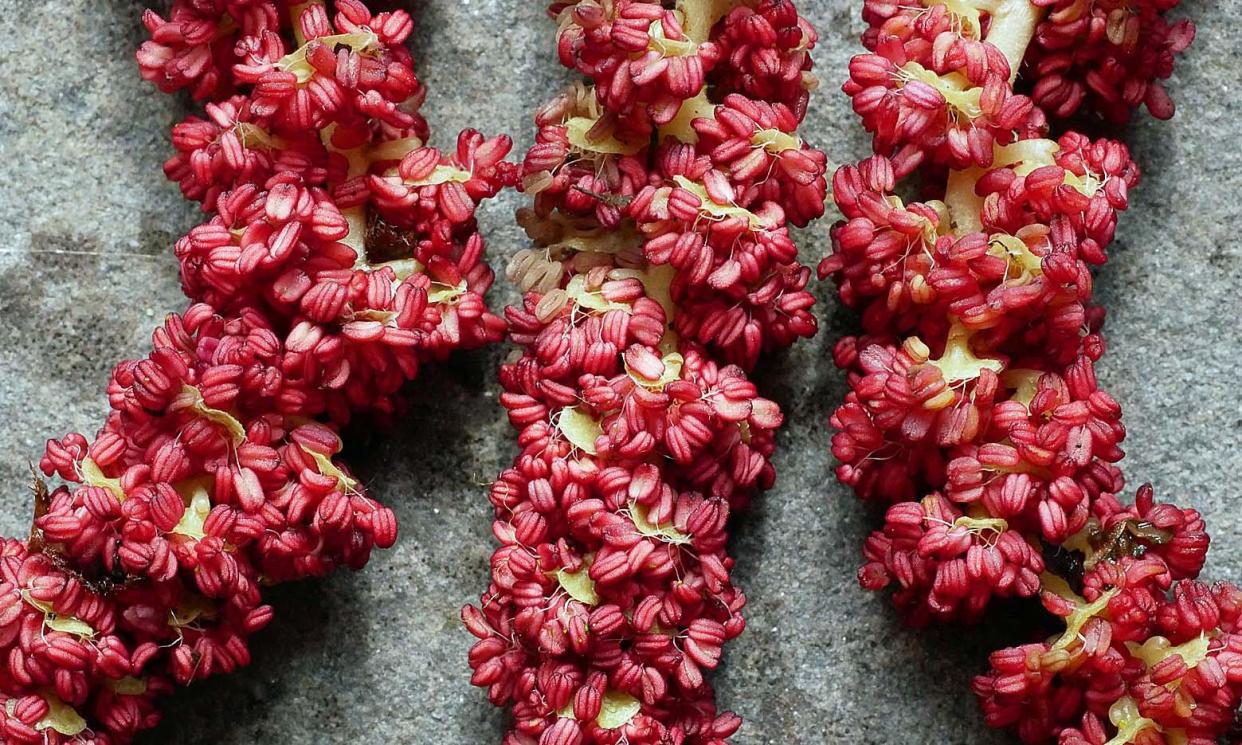Country diary: These catkins reveal the strange beauty of evolution

From a distance, the pavement seemed to be crawling with enormous caterpillars, but these are unripe male catkins at my feet, torn down by stormy weather from a Lombardy poplar’s twigs 40ft above my head. On a still day, I’d need to botanise with binoculars to appreciate their beauty; now, high winds have presented me with a gift of the most colourful catkins in our tree flora. They are as long and broad as my fingers, densely packed spirals of purple stamens: unexploded pollen bombs.
So much pollen. Counting stamens and estimating their contents, there must be at least 100,000 pollen grains per catkin, and there are still plenty left on the tree. On a high pollen count day, enough to make a hay fever sufferer’s eyes water.
Every spring, catkin-bearing trees flood the air with pollen, triggering another annual epidemic of sneezing for about 20% of the human population whose immune system is triggered by proteins that leak from the pollen they inhale. The annual, invisible pollen blizzard comes in waves from late January onwards, before foliage buds burst and leaves impede pollen flow.
Only evolution would invest in such a profligate means of reproduction, tossing microscopically small packages of male genetic material into the wind, on the remote chance that they’ll dock with the tiny female stigma on the ovary of another tree of the same species.
Alder, hazel, birch, beech, oak and hornbeam trees are all wind-pollinated, but their pollen might not need to travel far because they all carry male and female catkins on the same tree. Even so, the hazel releases an estimated two and a half million pollen grains for every successful hazelnut produced. But poplars are dioecious, either male or female trees, so the odds are even less favourable. The nearest compatible female might be miles away, so from poplar’s perspective, the more pollen, the better.
Somehow, it works. Somewhere downwind, in early June, a successfully pollinated female poplar will release a snowstorm of fluffy seeds, to be wafted away on a summer breeze. This is a tree that casts its fate to the wind, although last night’s gale delivered rather too much for the catkins in my hand.
• Country diary is on Twitter at @gdncountrydiary


